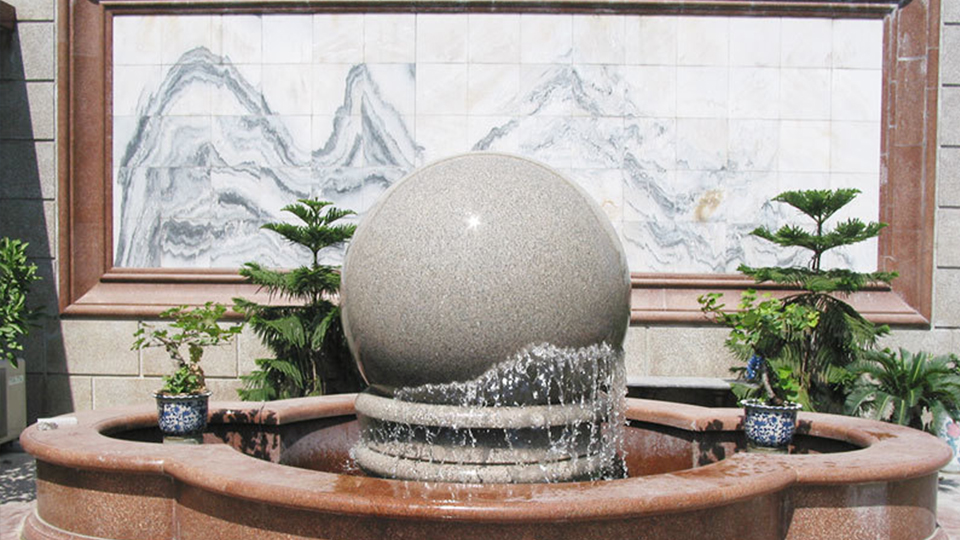

The Enduring Elegance: A Technical Guide to Treating and Maintaining Granite Countertops
Granite countertops, prized for their natural beauty, durability, and timeless appeal, represent a significant investment in any space. Their inherent hardness and resistance to scratches and heat make them a popular choice for kitchens, bathrooms, and beyond. However, while granite is undeniably robust, it is not entirely impervious to the rigors of daily use. Proper treatment and consistent maintenance are crucial to preserving its aesthetic allure, preventing damage, and ensuring its longevity.
This technical article delves into the essential aspects of treating and maintaining granite countertops. We will explore the critical process of sealing, discuss routine cleaning procedures, address stain removal techniques, and outline preventative measures to safeguard this valuable surface. Understanding the composition and properties of granite, along with the appropriate care protocols, will empower homeowners and professionals alike to keep their granite countertops looking pristine for years to come.
Understanding Granite: A Foundation for Proper Care
Granite is an igneous rock formed from the slow crystallization of magma beneath the Earth's surface. Its primary mineral components typically include quartz, feldspar, and mica, which contribute to its hardness, varied colors, and unique veining patterns. The presence of these minerals also influences its porosity, which is a critical factor in determining the need for sealing.
While often perceived as non-porous, granite actually possesses microscopic pores and fissures. The degree of porosity varies depending on the specific type of granite and its geological formation. More porous granites are more susceptible to absorbing liquids, which can lead to staining, bacterial growth, and even structural damage over time. This inherent porosity underscores the importance of proper sealing as the first line of defense.

The Vital Role of Sealing: Protecting Your Investment
Sealing granite countertops involves applying a protective barrier that penetrates the stone's surface, filling its pores and making it less absorbent. This sealant acts as a repellent, preventing liquids – such as water, oil, wine, and cleaning agents – from seeping into the granite and causing stains.
Understanding Sealants:
Granite sealants are typically resin-based polymers that are either solvent-based or water-based. They are designed to be food-safe once cured. Different types of sealants offer varying levels of protection and longevity:
Penetrating Sealants (Impregnators): These are the most common type of sealant for granite. They penetrate the stone's surface and create a hydrophobic (water-repelling) and oleophobic (oil-repelling) barrier within the pores. They do not typically alter the appearance of the granite. The lifespan of penetrating sealants can range from 1 to 5 years, depending on the quality of the sealant and the level of use.
Surface Sealants (Topical Coatings): These sealants form a film on the surface of the granite. While they offer excellent protection, they can sometimes alter the natural look and feel of the stone, and they are more prone to scratching and wear over time. Surface sealants are less commonly used for granite countertops.
The Sealing Process: A Step-by-Step Guide:
Proper application of sealant is crucial for its effectiveness. Here's a general guide:
Preparation: Ensure the granite countertop is clean, dry, and free of any dust, grease, or existing sealants. Use a pH-neutral cleaner specifically designed for stone and allow ample drying time (typically 24-48 hours).
Application: Apply the sealant evenly across the entire surface of the countertop using a clean cloth, applicator pad, or brush, following the manufacturer's instructions. Ensure complete coverage, paying attention to edges and seams.
Dwell Time: Allow the sealant to dwell on the surface for the recommended time (usually 5-15 minutes). This allows it to penetrate the granite's pores.
Wiping Excess: Thoroughly wipe away any excess sealant from the surface with a clean, dry cloth. Failure to remove excess sealant can result in a hazy or sticky residue.
Curing Time: Allow the sealant to cure completely according to the manufacturer's instructions (typically 24-72 hours). Avoid using the countertop during this time to ensure the sealant properly bonds with the stone.
Testing the Seal:
Regularly test the effectiveness of your granite sealant by placing a few drops of water on the surface. If the water beads up and remains on the surface for several minutes without soaking in, the sealant is likely still effective. If the water darkens the stone or soaks in quickly, it's time to reseal. The frequency of resealing depends on the porosity of the granite and the level of use, but generally, resealing every 1-3 years is recommended.
Routine Cleaning: Maintaining Daily Beauty
Even with proper sealing, regular cleaning is essential to maintain the beauty and hygiene of your granite countertops.
Daily Cleaning:
Wipe Spills Immediately: The most crucial step in preventing stains is to wipe up spills as soon as they occur. Use a clean cloth or paper towel to blot the spill, working from the outside in to prevent it from spreading.
Gentle Daily Cleaner: For routine cleaning, use a pH-neutral stone cleaner or a mild dish soap diluted in warm water. Avoid abrasive cleaners, acidic or alkaline cleaners (such as vinegar, ammonia, or bleach), and scouring pads, as these can dull the sealant and potentially damage the granite surface over time.
Rinse and Dry: After cleaning, rinse the surface with clean water and thoroughly dry it with a soft cloth to prevent water spots.
Weekly Cleaning:
More Thorough Cleaning: Once a week, you may want to perform a slightly more thorough cleaning using a dedicated stone cleaner. Follow the product instructions carefully.
Stain Removal: Addressing the Inevitable

Despite your best efforts, stains can occasionally occur. Prompt and appropriate action is key to successful stain removal. The type of stain will dictate the best approach:
Water-Based Stains (e.g., coffee, tea, juice, wine): For fresh water-based stains, immediate wiping is usually sufficient. For older or more stubborn stains, try a poultice made from baking soda and water. Apply the paste to the stain, cover it with plastic wrap, and let it sit for several hours or overnight. Rinse thoroughly and dry.
Oil-Based Stains (e.g., cooking oil, grease, cosmetics): For oil-based stains, create a poultice using baking soda and a small amount of water or a degreasing dish soap. Apply the paste, cover with plastic wrap, and let it sit for several hours. Rinse thoroughly and dry. You may need to repeat this process.
Ink Stains: For ink stains, try applying a poultice made from hydrogen peroxide (for light-colored granite) or acetone (with extreme caution and only on dark granite, as it can etch some lighter stones). Test in an inconspicuous area first. Apply the poultice, cover, let sit, rinse, and dry.
Rust Stains: Rust stains are often difficult to remove. You can try a commercial rust remover specifically designed for stone, following the manufacturer's instructions carefully. Avoid using harsh acidic rust removers that can damage the granite. A poultice made with diatomaceous earth and a rust remover can also be effective.
Organic Stains (e.g., mold, mildew): Clean organic stains with a solution of equal parts water and isopropyl alcohol. For stubborn mold or mildew, a diluted solution of hydrogen peroxide (test in an inconspicuous area first) can be used. Rinse thoroughly and dry.
Poultice Application:
A poultice is a paste-like mixture that draws stains out of porous materials like granite. To make a poultice:
Identify the Stain Type: Use the appropriate absorbent material (e.g., baking soda for water-based and oil-based stains, diatomaceous earth for oil-based and rust stains).
Mix with a Solvent: Mix the absorbent material with a suitable solvent to create a thick paste (similar to peanut butter). For water-based stains, use water. For oil-based stains, use water or a degreasing dish soap. For ink stains, use hydrogen peroxide or acetone (with caution). For rust stains, use a commercial rust remover for stone or a mixture of water and a rust-removing agent.
Apply to the Stain: Apply a thick layer of the poultice (about ¼ to ½ inch) over the stain, extending slightly beyond its edges.
Cover: Cover the poultice with plastic wrap and tape down the edges to prevent it from drying out too quickly.
Dwell Time: Allow the poultice to sit for several hours or even up to 24-48 hours for stubborn stains.
Remove and Rinse: Remove the plastic wrap and let the poultice dry completely. Gently scrape away the dried poultice with a plastic scraper or spatula. Rinse the area thoroughly with clean water and dry.
Repeat if Necessary: You may need to repeat the poultice application several times for persistent stains.
Preventative Measures: Protecting Your Granite from Future Damage
Prevention is always better than cure. Implementing these preventative measures can significantly reduce the risk of damage and staining:
Use Coasters and Placemats: Protect your granite from scratches and spills by using coasters under drinks and placemats under plates and hot dishes.
Avoid Placing Hot Items Directly on the Surface: While granite is heat-resistant, sudden and extreme temperature changes can potentially cause thermal shock and cracking, especially near edges or existing imperfections. Use trivets or hot pads under hot pots and pans.
Use Cutting Boards: Always use cutting boards when preparing food to prevent scratches and dulling of knives.
Avoid Harsh Chemicals: As mentioned earlier, avoid using abrasive cleaners, acidic or alkaline cleaners, and bleach on your granite countertops.
Promptly Clean Spills: Reinforce the habit of wiping up spills immediately to prevent staining.
Regular Sealing: Adhere to a regular resealing schedule based on the porosity of your granite and the level of use.
Addressing Common Concerns:
Etching: While granite is resistant to most acids found in household cleaners, prolonged exposure to highly acidic substances like lemon juice or vinegar can potentially etch or dull the surface, especially if the sealant is compromised. Wipe up acidic spills immediately.
Chipping and Cracking: While granite is strong, it can chip or crack under heavy impact, particularly at edges and corners. Be cautious when handling heavy objects around the countertops.
Seam Care: Pay special attention to the seams where granite slabs meet. Ensure these areas are properly sealed and avoid putting excessive stress on them.
Conclusion: Preserving the Beauty of Natural Stone
Granite countertops are a testament to natural beauty and enduring strength. By understanding the importance of proper sealing, adhering to consistent cleaning routines, addressing stains promptly and effectively, and implementing preventative measures, you can safeguard your investment and maintain the pristine appearance of your granite for generations to come. Treating granite is not about complex procedures but rather about adopting mindful habits and using the right techniques to protect and preserve this elegant and functional surface. With proper care, your granite countertops will continue to be a source of pride and a focal point of your space for years to come.
Name: selena
Mobile:8613176910558
Tel:86-13176910558
Whatsapp:8619323167067
Email:409284553@qq.com
Add:Laizhou ,Shandong , Shandong Province, China